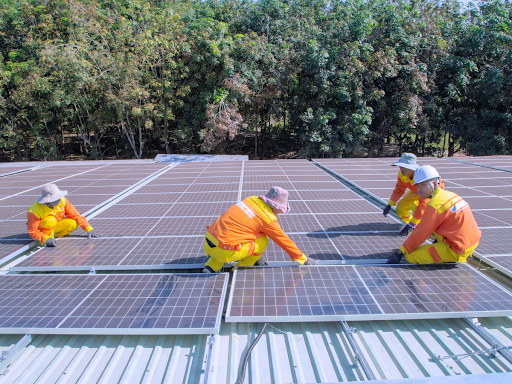Many homeowners assume insulation is a one-time installation that never needs attention. But over time, insulation can degrade, shift, fail to meet modern energy standards or become less effective due to factors like age, weather damage, or pest infestations. When this happens, you may experience many unexpected problems like fluctuating indoor temperatures, rising energy bills, reduced comfort and more.
If you face any of these issues, it could be time for an insulation upgrade. But how can you be sure? There are clear warning signs that indicate your insulation may need attention. To know them in detail, we’ll walk you through the most common red flags, why insulation deteriorates, and the best ways to improve your home’s energy efficiency with the right upgrades.
Don’t Ignore These Warning Signs—Your Insulation Needs An Upgrade
Spending Too Much On Utilities?
If your energy bills have been increasing despite stable energy rates and usage patterns, your home’s insulation may be deteriorating. Insulation materials like fiberglass batts and cellulose can settle over time, reducing their R-value (thermal resistance). When insulation compresses or shifts, it leaves gaps where heat can escape in winter and enter in summer, forcing your HVAC system to work harder. This inefficiency leads to higher energy consumption.
Rooms—Hot One Minute, Cold The Next?
If some rooms in your home feel significantly warmer or colder than others, your insulation might not be providing uniform coverage. This issue often results from thermal bridging, where heat moves through conductive materials like metal fasteners, wood framing, or uninsulated wall studs. Thermal bridging creates weak points in your home’s thermal barrier, allowing heat loss or gain despite having insulation in other areas.
Mice, Roaches, & More? They’re Getting In Through Unnoticed Gaps
Do not ignore the pests like rodents, insects, or birds that are getting into your attic or walls; it’s often due to poor insulation coverage. Gaps in insulation, especially in attics, crawl spaces, and wall cavities, create entry points for pests. Older insulation types like fiberglass batts can also become nesting material for rodents, worsening the problem. You might hear scratching sounds in the walls, find droppings, or notice chewed insulation in hidden areas. A strong musty or ammonia-like smell could also indicate pest activity. Modern insulation materials, such as spray foam insulation or rigid foam boards, can help maintain stable indoor temperatures.
Ice Dams On The Roof
Are you aware of when ice dams occur? When heat from inside your attic warms the roof, melting the snow. The water runs down the roof until it reaches the colder eaves, where it refreezes, creating a dam. This can lead to water backing up under shingles, causing leaks inside your home. Insufficient attic insulation is a common culprit for ice dams, as it allows warm air to escape, warming the roof and causing this dangerous issue.
If Outside Noise Feels Like It’s Inside, Something’s Not Right
Insulation not only helps control the temperature but also acts as a sound barrier. If you hear a lot of noise from outside—like traffic, voices, or neighborhood sounds—it could mean that your home’s insulation isn’t providing adequate soundproofing. Properly insulated walls and windows can block out much of this unwanted noise, providing a quieter, more peaceful environment inside your home.
Feeling Warm Even With The AC Blasting?
If you find that your air conditioner is running continuously or constantly needs to be adjusted to maintain a comfortable temperature, it could be because your insulation is insufficient. Without enough insulation, the cold air generated by the AC escapes too quickly, causing the system to run non-stop. Knowing how to install insulation properly can prevent such inefficiencies and improve energy savings.
Noticing Slow Or No Water Flow In Winter? Your Pipes Might Be At Risk
Frozen pipes are a common issue in homes with poor insulation, especially in basements, crawl spaces, and exterior walls. When water lines lack proper insulation, they are exposed to freezing temperatures. As the water inside freezes, it expands, increasing pressure and raising the risk of cracks or bursts, which can lead to severe water damage. Its warning signs include reduced or no water flow, frost on exposed pipes, and unusual cracking or popping noises. If not addressed, a frozen pipe can rupture, causing extensive flooding.
Windows Constantly Fogging Up? That’s A Sign Of Too Much Moisture
When warm, humid air meets cold surfaces like windows and walls, condensation forms, often due to missing vapor barriers or insufficient insulation. Over time, trapped moisture can lead to mold growth, wood rot, and structural damage. This issue can create water droplets on windows, peeling paint, and musty odors. An experienced insulation installer near you can evaluate these moisture issues and recommend the best solution to prevent further damage.
Sneezing More at Home? Something in the Air Might Be Triggering It
If you or your family members experience frequent allergy flare-ups, asthma symptoms, or respiratory discomfort, your home’s insulation may be contributing to poor indoor air quality. Over time, old insulation can break down and release dust, pollen, and mold spores into the air. Also, some older insulation materials contain chemicals like formaldehyde, which can irritate the respiratory system.
Wrapping Up
If you think your home needs insulation improvements, finding a reliable insulation company near you is the first step toward better energy efficiency and comfort. Experts at May Energy Solutions can assess your home’s insulation levels, identify weak spots, and recommend the best materials and techniques to optimize thermal performance. Making these upgrades now will make your home more comfortable and increase its value and longevity, ensuring you and your family enjoy a healthier, quieter, and more energy-efficient home for years to come.

